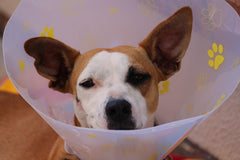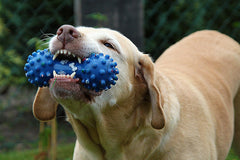
Hamsters are curious little creatures. They love to hoard food. They also love to explore their cage and be very active at night (they're nocturnal by nature). They're also incredibly playful and make fantastic pets overall!
Unfortunately, hamsters also have a relatively short lifespan of 1.5 to 2 years on average. One way that you can maximize your hamster's life both in terms of enjoyment and length is to feed them the perfect hamster diet.
To understand what the perfect hamster diet is for your pet, let's first analyze what hamsters eat in the wild.
The Wild Hamster Diet
By nature, like humans, hamsters are omnivores. However, their small stature means that they would most likely be feeding on plant matter in the wild. Their hamster diet would typically feature a lot of seeds, nuts, and plant matter. They also frequently live in dry, open areas where food sources tend to be scarce. It's one reason why they have evolved to have pouches at the side of their mouth to transport food for safe storage.
Despite being small, hamsters still have protein. They will eat insects, smaller animals, and even frogs. Depending on where they live, they might be able to eat lizards.
When people pick hamsters as pets, they often forget that they eat protein in the wild. Many photos of hamsters show them putting a carrot in their mouth or some other vegetable. However, the optimal hamster diet has protein in it. The optimal hamster daily diet should include 16% protein and 5% fat.
Your Hamster's Diet Plan
For a healthy hamster diet, you will need to feed your little pet a wide variety of foods.
First, you will need some commercial hamster food as their staple diet. There are a few foods out there that receive high marks. In particular, one meal, Kaytee Fiesta Gourmet Variety Diet Gerbil & Hamster Food, has consistently high ratings from multiple hamster owners. This food has 13.5% crude protein and 6% fat, so pretty close to the optimal ratio, as discussed earlier. It's all-natural food as well, containing corn, oats, wheat, peanuts, and more. The proteins come from nuts, which a wild hamster would eat, so it closely mimics their natural diet.
You can (and should) give your hamster fresh fruits and vegetables as a treat. These should comprise no more than 10% of the overall hamster diet to prevent complications like diabetes. You can feed your pet hamster apple (no seeds), bananas, blueberries, grapes, and strawberries. You can even feed them vegetables and grains such as spinach, carrots, cooked pasta, and cooked rice.
Feeding your hamsters fresh fruits and veggies occasionally does more than giving them nutrition. It presents an opportunity to bond with your pet and earn their trust. You mustn't overdo it, though, as too many treats can be problematic for these furry little friends!
What Foods Should You Avoid?
There are some foods that you must never feed your hamster if you're to have the perfect hamster diet. In particular, avoid anything too sugary or refined. Hamsters are not used to eating Reese's or a Big Mac! Please don't give this food to them. Also, chocolate is poisonous to hamsters. The chemical, theobromine, found in chocolate is generally safe for human consumption (simply because we cannot consume enough of it through our regular diets to affect us). However, it is lethal for hamsters. Even a small amount of chocolate can kill the average hamster.
Avoid raw starches, rhubarb (or poisonous rhubarb leaves). It would help if you also avoided almonds, garlic, and onions. Citrus fruit is also a relatively big no-no, so no Cuties for your little pet!
The Healthy Hamster Diet Mimics Nature
With the right hamster diet, your pet will eat the foods that they would typically find on their own in the wild. Your hamster will have nuts for protein, starches, commercially-produced pellets, and a few treats (like berries and bananas). They should get approximately 16% protein and 5% fat between all of these different foods, which is ideal for these furry little creatures!
What is a hamster's diet?
How much have fiber should be in a hamster diet?
What should a hamster's diet have in it?
Check out our blog and follow me on LinkedIn to stay up-to-date!




